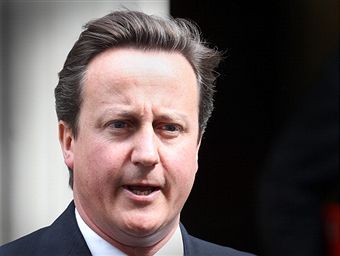 As British helicopters pound away at Libyan targets, another battle is being waged inside the Ministry of Defence’s fortress-like building. The fight is over the post-2015 budget, and it is an arduous one.
As British helicopters pound away at Libyan targets, another battle is being waged inside the Ministry of Defence’s fortress-like building. The fight is over the post-2015 budget, and it is an arduous one.
After the uniform-creasing settlement the MoD got in the Spending Review last year, the Prime Minister said in the House of Commons on 19th Oct 2010 that while the precise budgets beyond 2015 would be agreed in future reviews, his “own strong view” was that the MoD would see “year-on-year real-term growth in the defence budget in the years beyond 2015.”
So far so good — the MoD budget may have to fall now, in line with other departments, but at least it will increase post-2015. Or will it? First of all, given the costs associated with the equipment programme, real-term growth could still mean cuts. In addition, two other pieces of information now in the public domain suggest that the MoD is heading for a decrease in spending.
First, as Pete has observed, the Office of Budget Responsibility report on Fiscal Responsibility has assumed that spending on defence will be “constant as a share of GDP after 2015-16.” The OBR makes a number of assumptions, which will be changed as the government changes its views. But it is nonetheless interesting to note that the OBR has reason to believe that defence spending will remain the same percentage of GDP after 2015.
Even more noteworthy is a recent NAO report into armoured vehicles. The NAO looked at the impact of the Strategic Defence and Security Review on the defence equipment programme post-2015 and seemed to conclude that cuts in the period 2014-2020 for armoured vehicles would stand at £2.014 billion in 2014-15 and rise to £4.056 billion in 2020-21.
Now, as I understand it such cuts could be offset by increased investment elsewhere in the defence budget, but it is not clear where these will come from. And as the NAO report says, the vehicle cuts have already “enabled the Department to meet cost growth in other areas of Defence, such as personnel costs, as well as address cost overruns in other equipment areas.”
I have no doubt that the PM, the Defence Secretary and the vast majority of the Cabinet want to do precisely what was said on 19th Oct, i.e. “year-on-year real terms growth” in the defence budget after 2015. But, like all real battles, he who sets the stage wins; and the stage for the post-2015 budget is being fought over right now. Of course, if the economy turns, none of this will matter much. But if it does not, and a post-Libya, neo-isolationist mood takes hold in Britain, the assumptions could, in the words of a defence expert I spoke to, be used “to try and constrain our foreign and security policy ambitions.” It would seem appropriate for the government to clarify the matter before recess.






Comments